Do Camellias Like Tea Bags? Discover the Benefits
If you’re a gardening enthusiast always looking for ways to boost your plants’ health, you might wonder: do camellias like tea bags? Luckily, the answer is yes! Camellias benefit from the nutrients in tea bags, which can help them thrive. This evergreen shrub, known for its stunning blooms, loves acidic soil, making tea bags an excellent addition to your gardening routine.
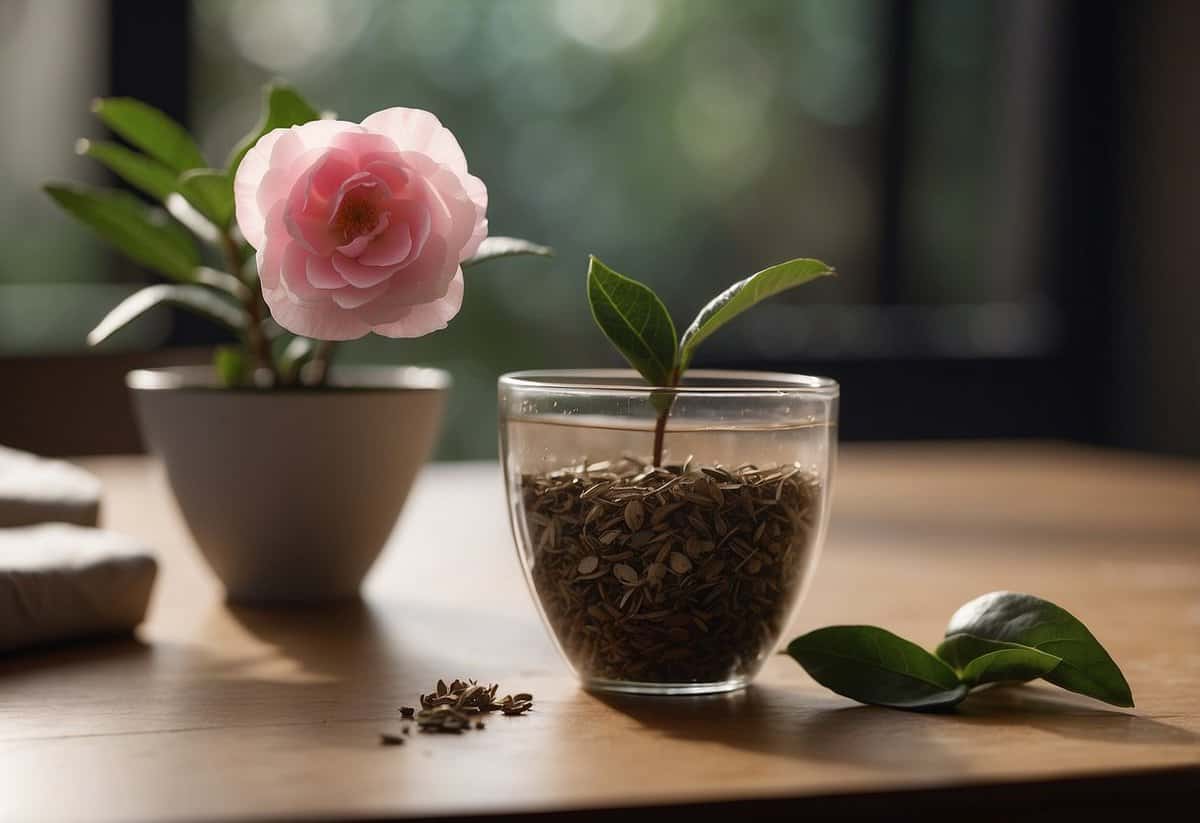
Tea bags break down into organic matter, enriching the soil with nutrients that camellias need. Used tea bags can act as a natural fertilizer, providing camellias the acidic conditions they prefer. If you have some used tea bags, try adding them to the soil around your camellias for vibrant, healthy growth.
Remember, moderation is key to reaping the benefits without harming your plants. Tea bags should be used wisely to maintain the right balance in your garden’s soil. With just a few easy steps, you can give your camellias a nutrient boost and enjoy their beautiful blossoms for longer periods.
Understanding Camellia Basics

Camellias are beautiful flowering shrubs that need specific care to thrive. This section covers the key aspects you should know about growing and caring for camellias.
The Camellia Genus and Species
Camellia is a genus that includes several species. The most popular ones are Camellia japonica and Camellia sasanqua. These evergreen shrubs are known for their lush foliage and vibrant flowers. Camellia japonica tends to have larger flowers and thrives in slightly shadier areas. Camellia sasanqua has smaller flowers but is more tolerant of sun. These plants can grow as tall as trees or be pruned to stay as smaller flowering shrubs.
Optimal Growing Conditions for Camellias
Camellias prefer environments that mimic their native habitat. They thrive best in partial shade, which protects them from harsh sun. It’s crucial to plant them in well-draining, acidic soil. They enjoy moderate temperatures and may struggle in extreme cold. Checking the hardiness zone is important before planting. Many cultivars and hybrids are bred to withstand specific climates, so select a variety that suits your local conditions. Make sure to water them regularly but avoid waterlogging.
Planting and Initial Care
When planting your camellia plant, choose a spot with good drainage and partial shade. Dig a hole twice as wide as the root ball and just as deep. Place the shrub in the hole, fill it with soil, and water thoroughly. Mulching around the base helps retain moisture and keep the roots cool. During the first year, focus on keeping the soil moist and fertilizing in spring and early summer with a balanced fertilizer. Pruning isn’t usually necessary in the first year, but you can trim the tops to encourage a bushier growth. Your camellias will reward you with stunning blooms if properly cared for from the start.
Soil and Fertilization for Healthier Plants
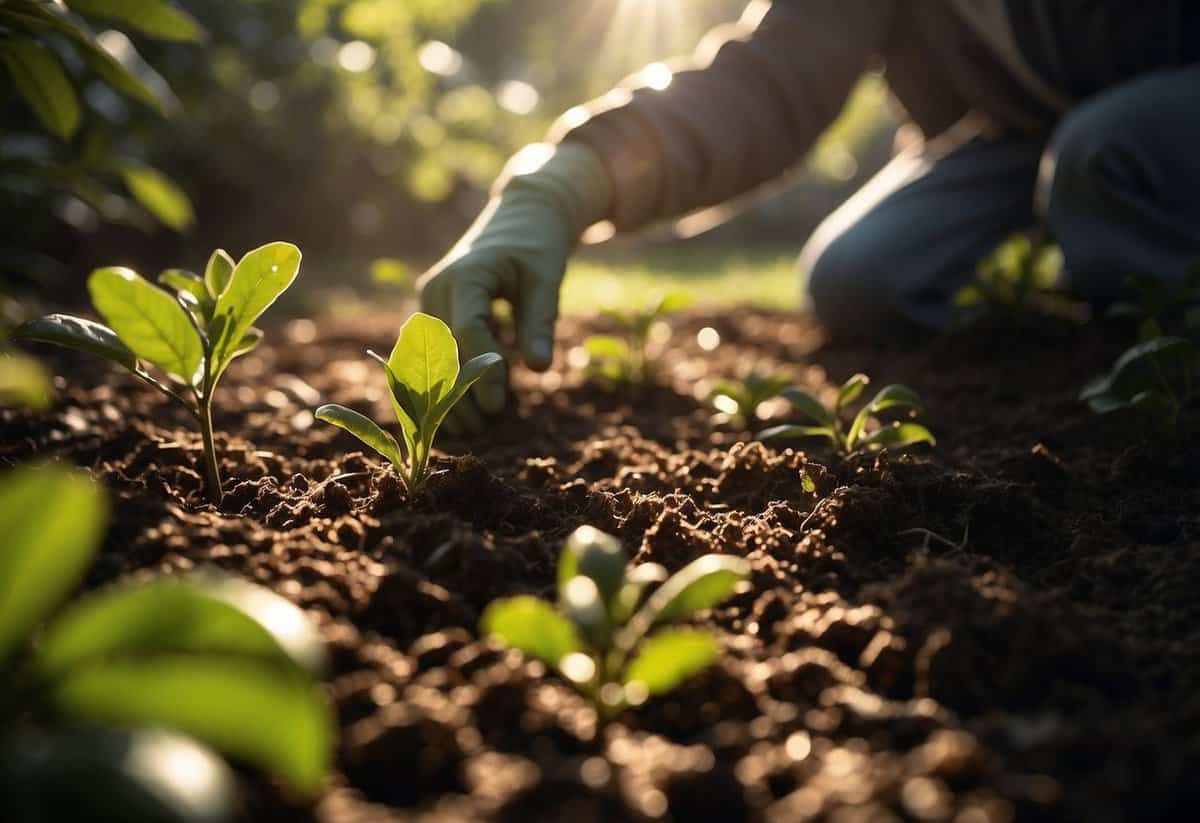
Camellias thrive best in well-draining, slightly acidic soil. Adding used tea bags can help improve both soil quality and plant health when used properly.
The Importance of Soil Quality
Soil quality is crucial for camellias. They prefer acidic soil with a pH between 5.5 and 6.5. This acidity helps in nutrient absorption, leading to vibrant blooms.
Well-draining soil prevents root rot. You can improve drainage by adding organic matter like compost or pine bark.
Organic matter enriches the soil, providing essential nutrients. Regularly adding mulch helps retain moisture and moderates soil temperature, creating an ideal environment for camellias.
Fertilizing Your Camellias
Fertilizing camellias correctly ensures healthy growth. Use a balanced fertilizer with equal amounts of nitrogen, phosphorus, and potassium.
Apply fertilizer in spring and mid-summer for the best results. Too much fertilizer can harm the plants, causing leaf burn or poor flowering.
Nitrogen promotes leafy growth, phosphorus supports root and flower development, and potassium improves overall plant health. Follow the recommended dosage on the fertilizer package to avoid overfeeding.
Using Tea Bags as Fertilizer
Used tea bags can serve as a mild fertilizer for camellias. They add organic matter to the soil, improving its structure and nutrient content.
Start by brewing tea using used tea bags. Once the tea cools, use it to water your camellias. This adds beneficial nutrients and helps maintain the soil’s acidity.
Another method is to add tea leaves directly to the soil or compost. This provides a slow-release nutrient source and can also act as a natural mulch to retain moisture and suppress weeds. For more details, see this guide on using tea leaves in the garden.
Light and Water Requirements
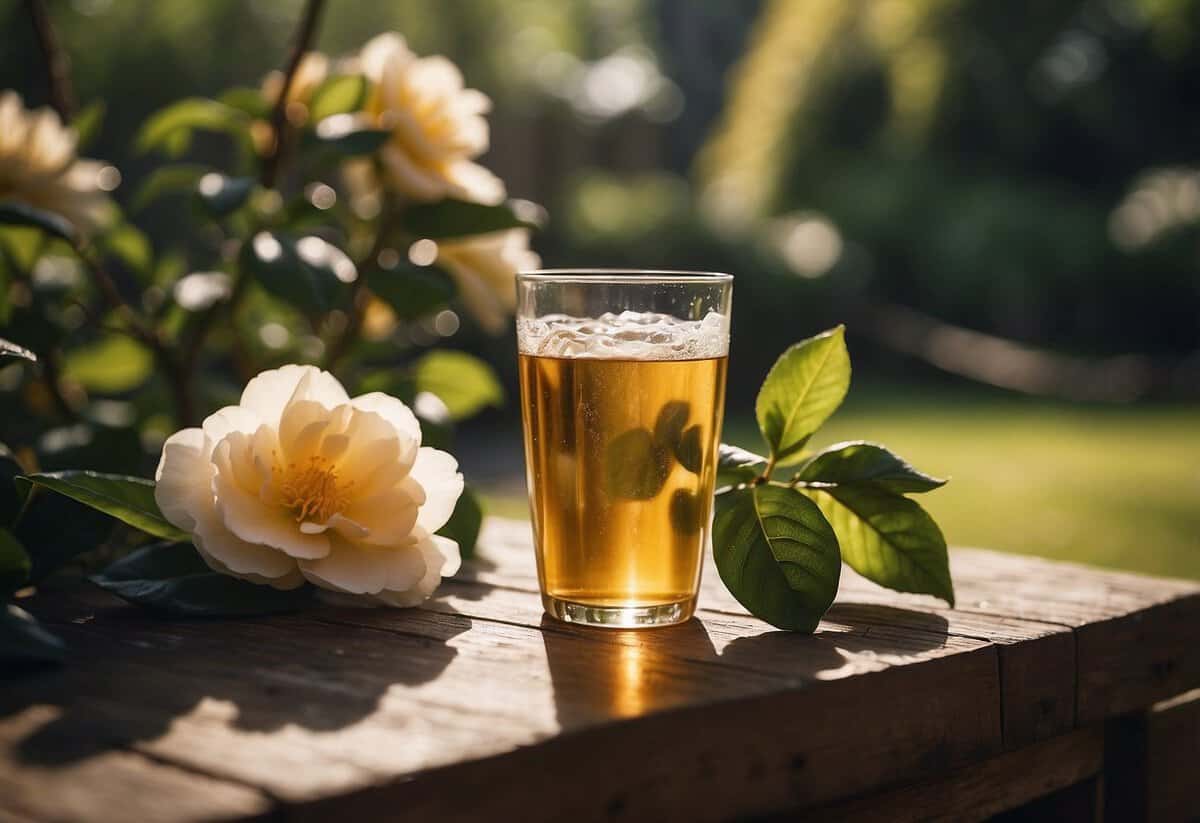
Camellias need specific light and water conditions to thrive. You need to be mindful of sun exposure and watering practices to help your camellias grow strong and healthy.
Sunlight and Placement
Camellias prefer bright, indirect light. They grow best in partial shade, avoiding the harsh midday sun. Full sun can often lead to leaf scorch and poor flower production.
Place your camellias in a spot that gets morning sun followed by afternoon shade. This balance helps them receive enough light without the risk of overheating. If you live in a particularly hot area, ensure they have a bit more shade to protect them.
Additionally, when planting camellias near trees or structures, make sure they aren’t overcrowded. Proper air circulation is crucial to prevent humidity-induced diseases.
Watering Practices and Considerations
Maintaining the right moisture levels is crucial for camellias. Overwatering can lead to root rot, while underwatering can cause stunted growth and poor flower quality. Aim to keep the soil moist but not soggy.
A good rule of thumb is to water deeply, ensuring the soil is wet to a depth of 14-18 inches. During dry periods, you may need to water more frequently, but always check the soil moisture before adding more water.
Using a soaker hose or drip-watering system can help you water efficiently without wetting the foliage, reducing the risk of fungal diseases. Mulching can also help retain soil moisture and reduce watering frequency.
Pruning and Maintenance
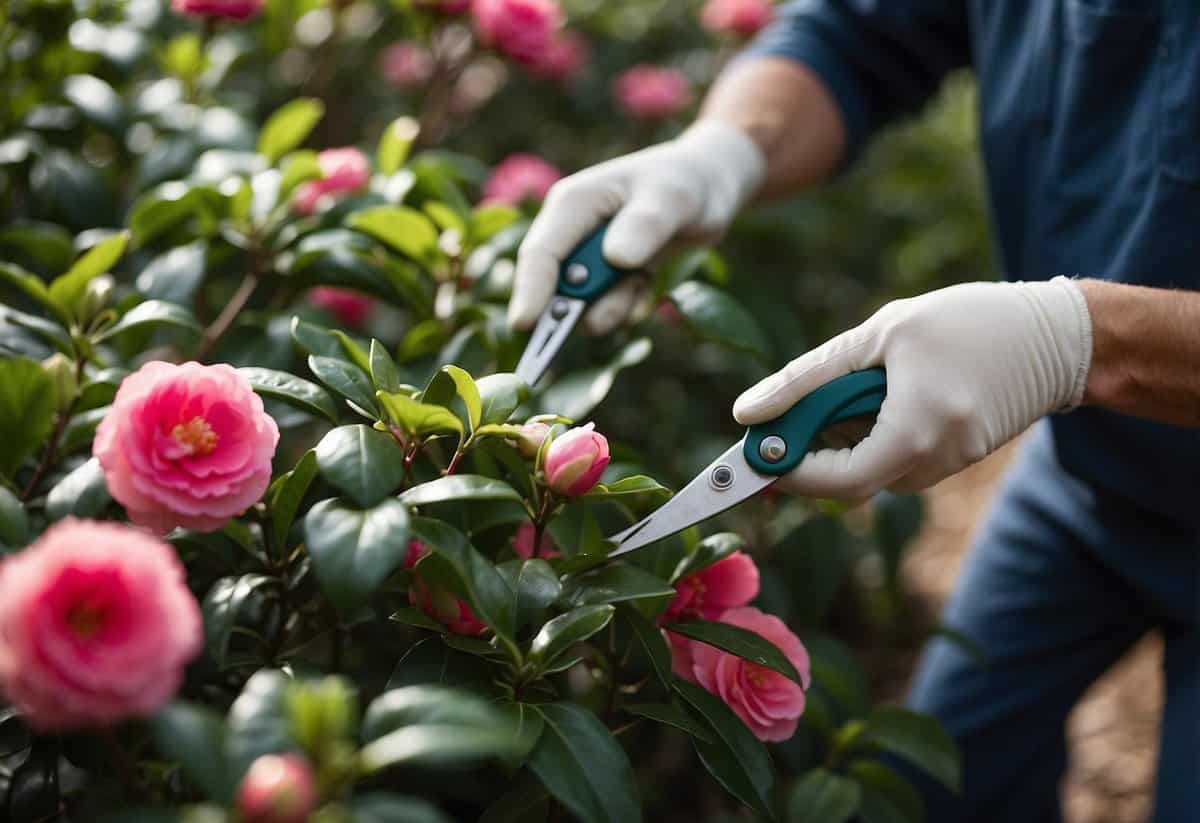
Proper care of camellias involves pruning and regular maintenance to ensure healthy growth and beautiful blooms. Pruning helps shape the shrub while regular maintenance keeps it free from disease and pests.
Effective Pruning Techniques
Pruning your camellia is essential for shaping the shrub and encouraging new growth. For significant reshaping, cut back one third to one half of the plant. Use sharp pruning shears for small stems and a pruning saw for larger branches to make clean cuts, which heal faster and reduce disease risk. When pruning to maintain height, trim the ends of the branches by about 1 inch for a taller plant, or up to 3 inches to keep it at its current size.
For overgrown shrubs, prune in stages to avoid shocking the plant. You might sacrifice some blooms, but this method helps the camellia adjust gradually. Cutting off lower branches is ideal if you want to create a tree shape.
Regular Maintenance for Longevity
Regular maintenance includes checking for pests and diseases. Camellias are evergreen and need protection from extreme conditions. Keep the soil moist but not waterlogged, and mulch around the base to retain moisture and prevent weeds. Fertilize appropriately during the growing season to encourage vibrant color and healthy blooms.
Inspect your camellia regularly for signs of pests like aphids or scale insects. Use appropriate treatments to keep your shrub healthy. Maintaining good airflow around the plant by thinning out crowded branches can also prevent disease. Regular watering, fertilizing, and monitoring will ensure your camellia remains a stunning focal point in your garden.
Pest, Disease, and Environmental Protection
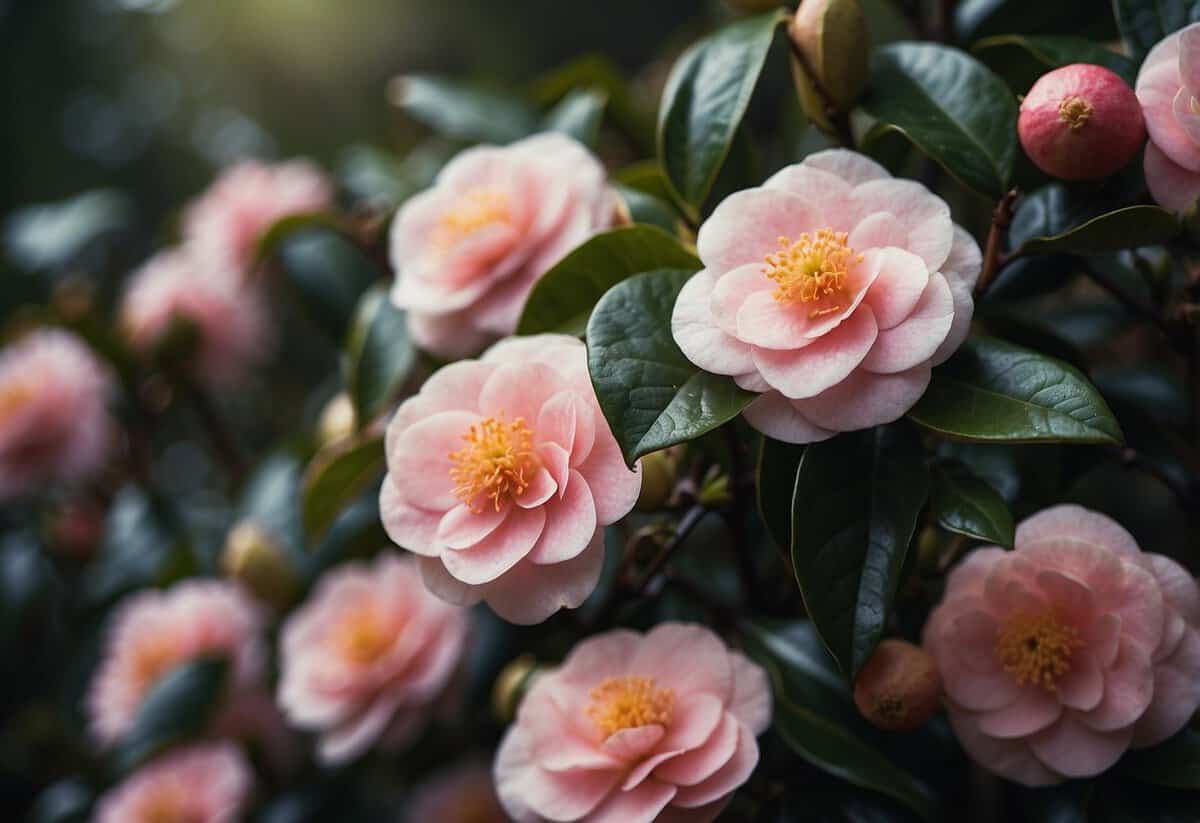
Keeping your camellias healthy involves protecting them from pests and diseases while ensuring they thrive in the right environmental conditions. Understanding what to watch for and how to mitigate these issues can make a significant difference.
Common Pests and Diseases
Tea Scale
One of the main pests to watch for is tea scale. These insects attach to the underside of leaves and suck out the plant’s juices, causing leaves to yellow and drop. To manage tea scale, you can regularly inspect your plants and use horticultural oil spray.
Aphids
Aphids are another pest that can harm your camellias. These small insects feed on sap and excrete a sticky substance called honeydew. You can control aphids with insecticidal soap or by introducing beneficial insects like ladybugs.
Root Rot
Root rot is a serious disease caused by poor drainage and overwatering. You’ll notice wilting leaves and an overall decline in plant health. Improve drainage by planting camellias in well-draining soil and avoid waterlogging.
Flower Blight
Flower blight can quickly turn camellia flowers brown and make them drop off prematurely. Remove and discard affected blooms and mulch to prevent the disease from spreading.
For more information on camellia diseases, you can visit this guide.







